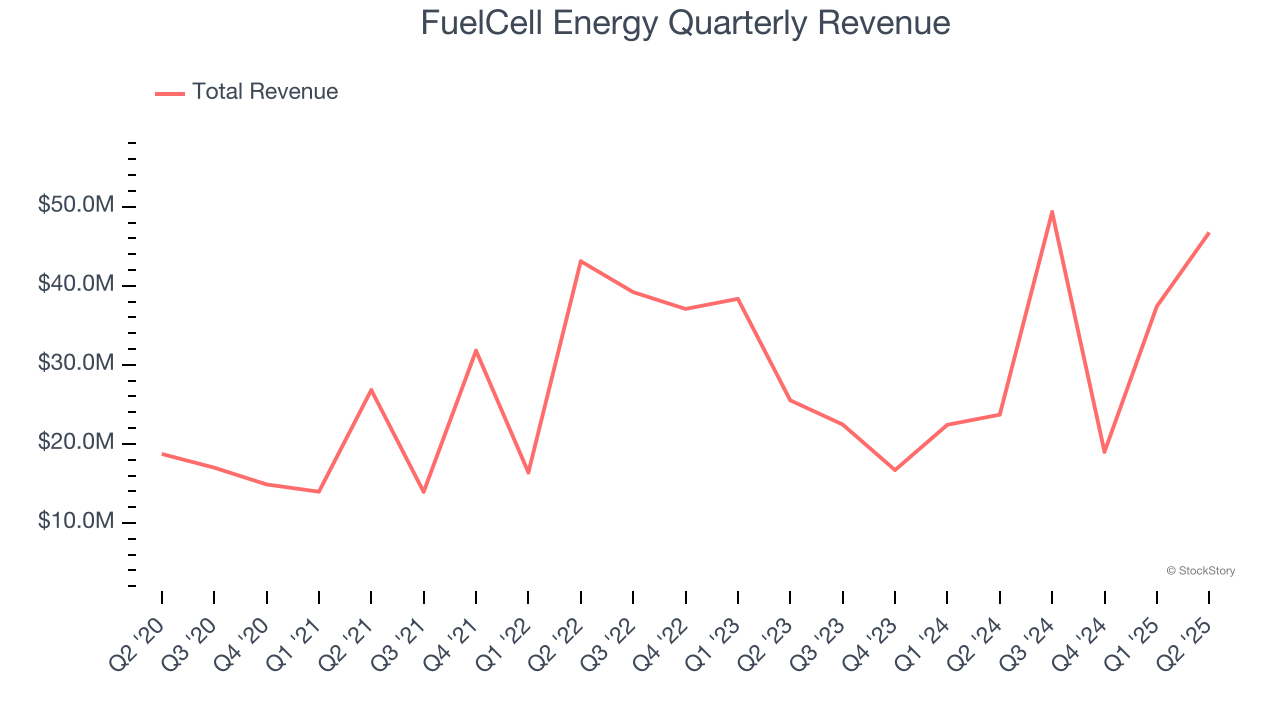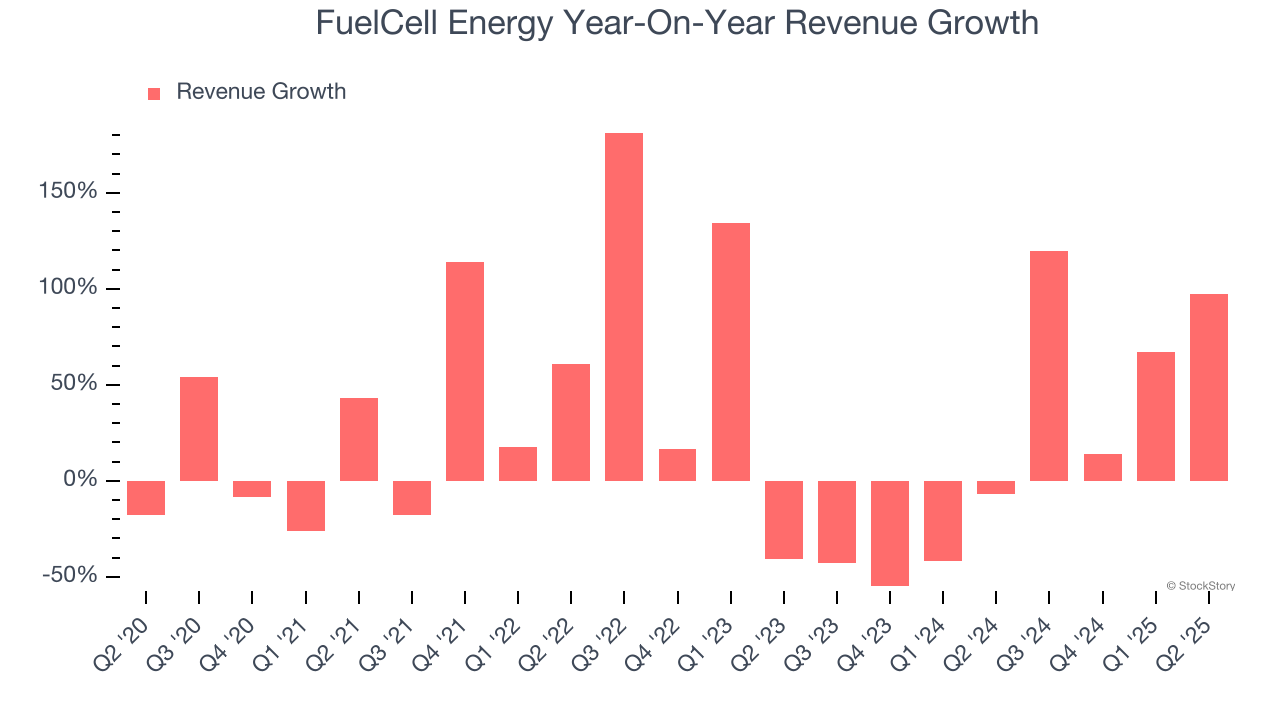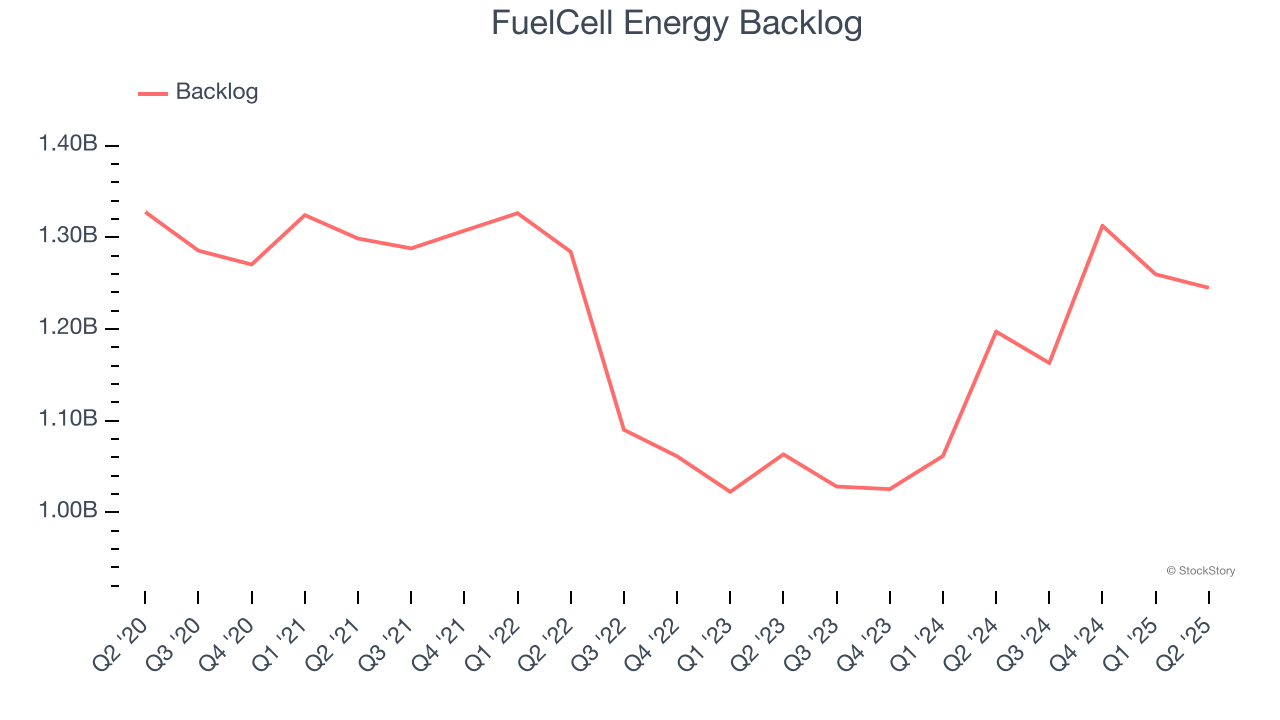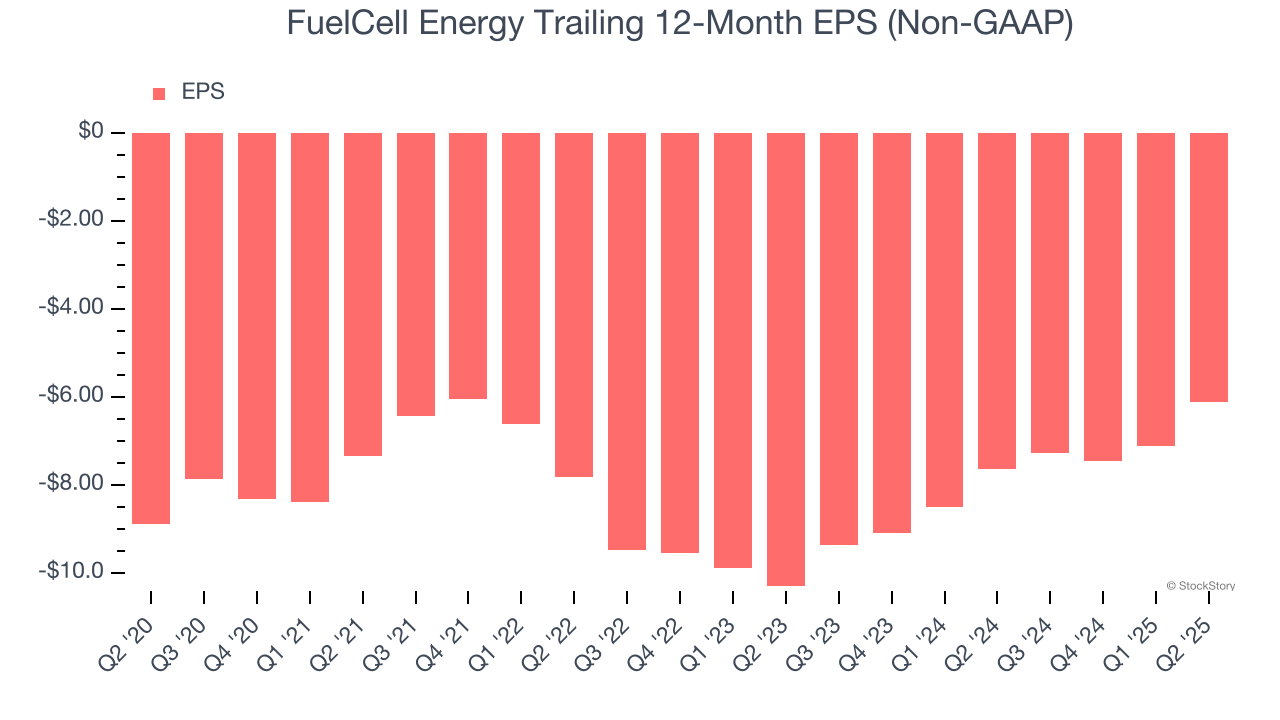
Carbonate fuel cell technology developer FuelCell Energy (NASDAQ:FCEL) missed Wall Street’s revenue expectations in Q2 CY2025, but sales rose 97.3% year on year to $46.74 million. Its non-GAAP loss of $0.95 per share was 41.7% above analysts’ consensus estimates.
Is now the time to buy FuelCell Energy? Find out by accessing our full research report, it’s free.
FuelCell Energy (FCEL) Q2 CY2025 Highlights:
- Revenue: $46.74 million vs analyst estimates of $49.58 million (97.3% year-on-year growth, 5.7% miss)
- Adjusted EPS: -$0.95 vs analyst estimates of -$1.63 (41.7% beat)
- Adjusted EBITDA: -$16.38 million vs analyst estimates of -$14.8 million (-35% margin, 10.7% miss)
- Operating Margin: -204%, down from -142% in the same quarter last year
- Backlog: $1.24 billion at quarter end, up 4% year on year
- Market Capitalization: $96.18 million
“In our third fiscal quarter, we delivered meaningful revenue growth while advancing execution of our long-term strategy,” said Jason Few, President and Chief Executive Officer.
Company Overview
Founded in 1969, FuelCell Energy (NASDAQ: FCEL) is a leading manufacturer and developer of carbonate fuel cell technology for stationary power generation.
Revenue Growth
Reviewing a company’s long-term sales performance reveals insights into its quality. Any business can put up a good quarter or two, but the best consistently grow over the long haul. Luckily, FuelCell Energy’s sales grew at an incredible 18.6% compounded annual growth rate over the last five years. Its growth beat the average industrials company and shows its offerings resonate with customers.

Long-term growth is the most important, but within industrials, a half-decade historical view may miss new industry trends or demand cycles. FuelCell Energy’s recent performance shows its demand has slowed significantly as its annualized revenue growth of 4.3% over the last two years was well below its five-year trend. We also note many other Renewable Energy businesses have faced declining sales because of cyclical headwinds. While FuelCell Energy grew slower than we’d like, it did do better than its peers. 
FuelCell Energy also reports its backlog, or the value of its outstanding orders that have not yet been executed or delivered. FuelCell Energy’s backlog reached $1.24 billion in the latest quarter and averaged 8.9% year-on-year growth over the last two years. Because this number is better than its revenue growth, we can see the company accumulated more orders than it could fulfill and deferred revenue to the future. This could imply elevated demand for FuelCell Energy’s products and services but raises concerns about capacity constraints. 
This quarter, FuelCell Energy achieved a magnificent 97.3% year-on-year revenue growth rate, but its $46.74 million of revenue fell short of Wall Street’s lofty estimates.
Looking ahead, sell-side analysts expect revenue to grow 35.7% over the next 12 months, an improvement versus the last two years. This projection is eye-popping and indicates its newer products and services will catalyze better top-line performance.
Here at StockStory, we certainly understand the potential of thematic investing. Diverse winners from Microsoft (MSFT) to Alphabet (GOOG), Coca-Cola (KO) to Monster Beverage (MNST) could all have been identified as promising growth stories with a megatrend driving the growth. So, in that spirit, we’ve identified a relatively under-the-radar profitable growth stock benefiting from the rise of AI, available to you FREE via this link.
Operating Margin
FuelCell Energy’s high expenses have contributed to an average operating margin of negative 123% over the last five years. Unprofitable industrials companies require extra attention because they could get caught swimming naked when the tide goes out. It’s hard to trust that the business can endure a full cycle.
Analyzing the trend in its profitability, FuelCell Energy’s operating margin decreased by 52.6 percentage points over the last five years. This raises questions about the company’s expense base because its revenue growth should have given it leverage on its fixed costs, resulting in better economies of scale and profitability. FuelCell Energy’s performance was poor no matter how you look at it - it shows that costs were rising and it couldn’t pass them onto its customers.

FuelCell Energy’s operating margin was negative 204% this quarter.
Earnings Per Share
We track the long-term change in earnings per share (EPS) for the same reason as long-term revenue growth. Compared to revenue, however, EPS highlights whether a company’s growth is profitable.
Although FuelCell Energy’s full-year earnings are still negative, it reduced its losses and improved its EPS by 7.2% annually over the last five years. The next few quarters will be critical for assessing its long-term profitability. We hope to see an inflection point soon.

Like with revenue, we analyze EPS over a more recent period because it can provide insight into an emerging theme or development for the business.
For FuelCell Energy, its two-year annual EPS growth of 22.9% was higher than its five-year trend. Its improving earnings is an encouraging data point, but a caveat is that its EPS is still in the red.
In Q2, FuelCell Energy reported adjusted EPS of negative $0.95, up from negative $1.94 in the same quarter last year. This print easily cleared analysts’ estimates, and shareholders should be content with the results. Over the next 12 months, Wall Street expects FuelCell Energy to improve its earnings losses. Analysts forecast its full-year EPS of negative $6.12 will advance to negative $4.71.
Key Takeaways from FuelCell Energy’s Q2 Results
It was good to see FuelCell Energy beat analysts’ EPS expectations this quarter. We were also glad its backlog outperformed Wall Street’s estimates. On the other hand, its revenue missed and its EBITDA fell short of Wall Street’s estimates. Zooming out, we think this was a mixed quarter. It seems that expectations were low, and the stock traded up 9.3% to $4.60 immediately following the results.
Should you buy the stock or not? When making that decision, it’s important to consider its valuation, business qualities, as well as what has happened in the latest quarter. We cover that in our actionable full research report which you can read here, it’s free.
